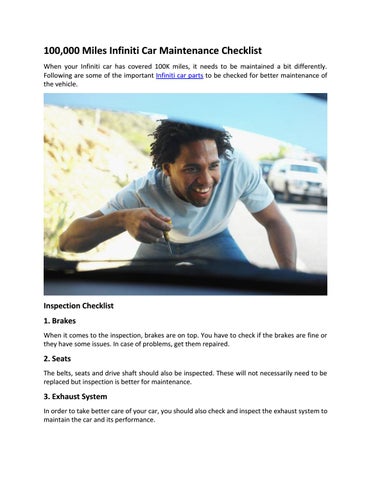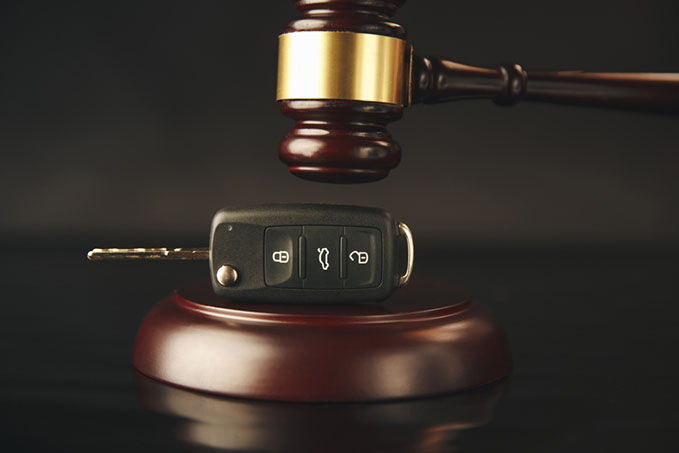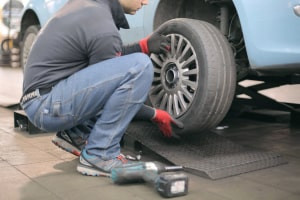
There are several things you can do in order to fix a window regulator that is broken quickly. These simple fixes are often more affordable and last a while. Find out what causes most broken window regulators, and how you can fix it yourself. It is possible to save money and avoid expensive repairs by making the repairs yourself. These repairs are quite simple. Follow these steps! Take care while working on the car.
Temporary solution
Misalignment of the mechanism is one of the leading causes of broken window regulators. Misaligned mechanisms can cause the window not to move and may even become stuck in one spot. To remove the regulator, remove the screws that hold the mechanism in place. To inspect the gear teeth you can also use an electric screwdriver. You can also inspect the track through which the regulator moves by removing a door panel. If the regulator is on small wheels, it could be stuck.

You may need to replace your entire regulator assembly if the motor fails in your window. First, remove the bolts connecting the regulator to the window. Make sure you have someone holding the glass while you take out the bolts. Otherwise, the window may shatter and become impossible to open or close. This is not a permanent fix, and may cause further problems. For the repairs, you may want to visit an automotive repair shop.
Common causes
The following quick fix will solve the problem of a broken window regulator: First, ensure that the window regulator does not become blocked. This is typically caused by debris in your window track. Clean the track and inspect all gear teeth. The window regulator may be misaligned in some cases and need to be replaced. If you are unable find a good replacement, it is worth calling a repair shop.
The most common cause of broken window regulators is wear and tear. The regulator's parts can get damaged or broken over time. Furthermore, they are more vulnerable to break due to the weight of your window. Lubrication can solve the problem. If the window does not move, remove the door panel and poke around. You can also use either duct tape or a rubber wedge to secure the glass.
Cost
The cost of a quick fix for a broken window regulator can vary based on the make and model of your car. The overall cost will depend on the type and amount of labor required. Some cars use a mechanical window regulator that uses a complicated gear system to raise and lower the window. These parts can be expensive and more complicated. A simple repair usually costs less than $200.

You will need to remove the window regulator and the motor before you can begin the repair. The motor will stop working because the window shutter will become stuck. The steps below will help you make this repair. Remove the screws holding down the window shutter. You must be careful not to scratch the glass during the process. Make sure your window regulator is working before you put it together. If you do not check it thoroughly, it could jam and cause an accident.
FAQ
Does it matter what college I go to?
You're wrong. There is no difference between colleges in terms of how to get into the automobile industry. Some schools have better programs than others, so you might want to look elsewhere if your goal is something more specialized.
Is it difficult to become a mechanic apprentice
It's not easy, but you learn fast, and there are many opportunities for advancement.
You must be patient and persistent. It is also important to know how you can fix vehicles, trucks, or motorcycles.
There is a lot of pressure from customers and family members who want you to succeed. But you should never feel pressured into making decisions you aren't comfortable with.
This could be an excellent career choice for someone who enjoys fixing cars. It's a job where you can earn a decent salary and build up your business.
But you may prefer another path. This is where you might be interested in becoming a technician.
This could involve using your technical knowledge to support other employees. This could be a way to help technicians with their problems or to teach them new techniques.
Another option is becoming a service advisor. You will offer assistance and advice to customers when they bring cars to a garage.
The decision you make will depend on what you are looking for. There are many options, so you can choose the one that suits you best.
Is it worth learning to be a mechanic?
The answer depends on what you are looking for in life. If money is your goal, then you can answer "yes". But if you are searching for meaning and purpose, then you should not answer this question.
If you don’t have any mechanical skills, it’s pointless to get into it. It will just waste your time. It's not going to make you rich. It's unlikely that you will be famous. It is unlikely that your life will change.
It would take you years to learn how to do everything correctly. You would still need to hire someone to fix your car if it breaks down. It's the reason most people don't bother. They find something more worthwhile.
In conclusion, if money is your main goal, you should go ahead. However, if you want to have a meaningful and fulfilling life, avoid the mechanic's trade.
What is the average time it takes to become a mechanic?
It takes years of practice and experience to become an expert mechanic. Working under the guidance of a professional mechanic is the best way to learn how repair cars.
You'll have to spend time at a garage learning all you can about cars and mechanics. You will need to be familiar with mechanical engineering books about mechanics, car design, and other topics.
You will also need to go to auto school.
It's crucial to start as soon as possible. It doesn't matter if you're old or not to study automotive technology. You can get certified as a mechanic by getting started right away!
What qualifications is required to become an mechanic?
A series of exams is necessary to become a mechanic. These exams include:
-
A general knowledge assessment
-
A practical examination
-
An apprenticeship test
These tests are designed for you to understand the basic concepts and principles of mechanics before your start as a technician.
After passing these tests, you will be eligible to become a mechanic. But, you will still need an apprenticeship. This will involve training in the trade.
To learn all there is to know about fixing vehicles, you will need workshops and classes. Additionally, you will need to work with experienced mechanics.
To be a successful mechanic, you will need to have a high degree of concentration and attention. It is essential to pay attention to all aspects of vehicle repairs.
To be a successful mechanic, you will need patience and perseverance. If you don’t enjoy following instructions, this might not be the right career path.
But if you love cars and enjoy fixing them, you could be very happy in this line of work.
Statistics
- According to the BLS, the median annual salary for automotive service technicians and mechanics in the United States was $44,050 in May 2020. (uti.edu)
- There were 749,900 jobs available for automotive service technicians and mechanics in 2016, which is expected to grow by six percent through 2026. (jobhero.com)
- The U.S. Bureau of Labor Statistics (BLS) reports that the job outlook for automotive service technicians and mechanics is expected to decline by 4% from 2019 to 2029. (indeed.com)
External Links
How To
How to diagnose your vehicle properly for repair
The symptoms of your vehicle are the first thing you need to look at in order to determine whether it is in dire need of repairs. Follow these steps to properly diagnose your vehicle.
-
Check engine lights. Check the dashboard light indicators such as the engine light indicator, the oil pressure gauge, the battery light indicator, the coolant temperature gauge, and the RPM gauge. It could indicate that your vehicle is having problems.
-
Take a look at the treads. Tires can become worn and cause problems in handling and braking. Also, inspect the treads of your wheels. They should look clean and be smooth. This can be done by removing the wheels from the vehicle and taking them off. You can check the tread wear with a flashlight.
-
Monitor the level and consistency of your brake fluid. You must always monitor the level of your brake fluid. This will ensure your brakes function properly. Low brake fluid levels could cause your brakes to fail when you apply pressure.
-
Check the suspension system. It is common for vehicles to have a suspension system which absorbs shocks or vibrations. This suspension system provides greater control and smoother acceleration and deceleration. A suspension problem can cause your vehicle to feel wobbly and shake uncontrollably. To test whether your vehicle has a suspension issue, try putting weight on the front or rear axle and observe the movement.
-
Examine the steering column. The steering column is used to link the steering wheel with the rest of vehicle's components. Many accidents can cause damage to steering columns. It is recommended to replace any steering column that feels loose, or shakey.
-
Observe the exhaust pipes. Exhaust pipes help move gases from the combustion chamber to the atmosphere. If your exhaust pipe leaks or cracks, it will allow harmful fumes into your cabin. Additionally, your tailpipe should be fixed immediately if it is bent.
-
Look under your hood. If you see anything unusual, take a look under the hood. There could be fluid leaking from your engine. In addition, if you notice an unusual smell coming from your engine compartment, you should contact a professional technician.
-
The air filter should be checked. Your vehicle's air filter collects dust and debris from the outside environment. A dirty air filter causes your vehicle to run poorly. Replace your air filter regularly.
-
Check the fan belt. Your vehicle's fan belt connects the engine to the transmission. If the fan belt fails, the engine won't start. The process of replacing the belt is straightforward. You only need a screwdriver or pliers to replace your belt.
-
The radiator hose and hoses should be checked. The radiator-hose carries water to the engine. It can crack or become damaged and leak hot liquid onto an engine. The hose can be repaired with a pair or needle-nosepliers, and a wire brush.
-
Make sure you have the windshield wipers checked. Windshield wipers use electricity to clean away snow and rain. If they stop functioning, they can leave streaks in your window glass. Simply change the washer oil to fix the problem.
-
Verify the condition of your battery cables. Your car's electrical system is powered by batteries. Make sure you disconnect the negative cable before replacing batteries. Failure to do so can damage your alternator.
-
Pay attention to your headlights. The headlights will illuminate the road ahead. Poor visibility can result if the headlights don't function properly. Inspect the bulbs for signs of burnt out.
-
Check the lights. If you approach other drivers at night, lights will warn them. You may be distracted by the light and end up in an accident.
-
Make sure you check your brakes. Brakes slow down your vehicle before a collision. If the brakes fail to work correctly, your car could lose control and collide with another vehicle.
-
Make sure to change the oil. Your engine will stay lubricated by the oil. It helps keep metal parts from getting too worn down. It is recommended that the oil be changed every other month.